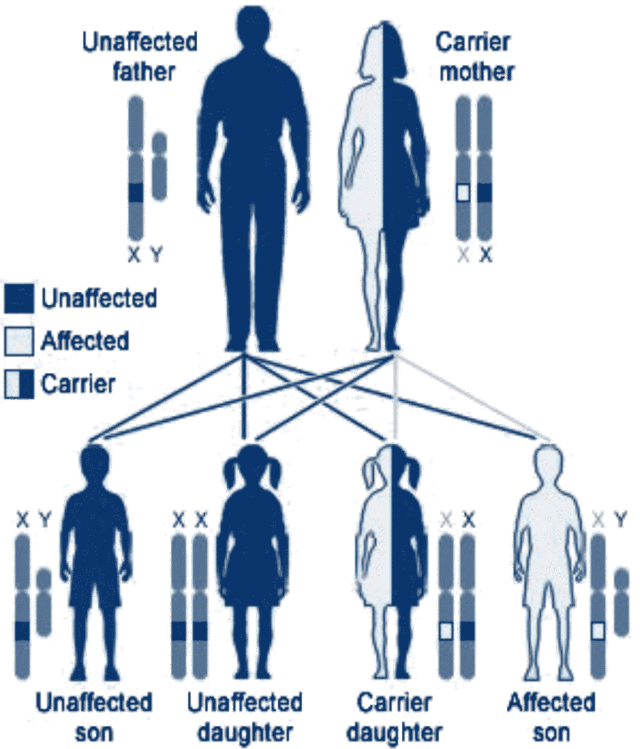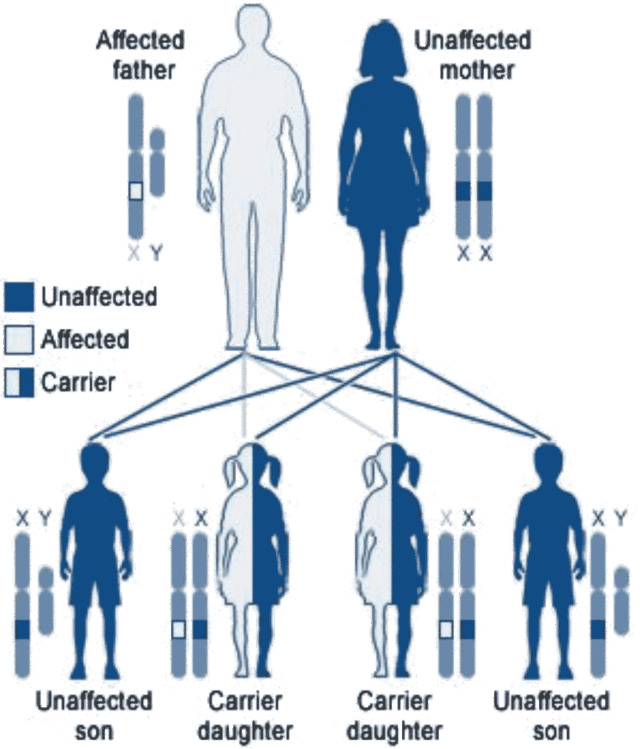XLP1 and XIAP are rare inherited condition that can be passed from one generation to another. However, there are also cases where a new XLP sufferer is discovered without a previous family history of XLP.
The purpose of this leaflet is to explain the likelihood of XLP affected individuals passing on XLP to future generations.
For the purpose of clarity - we will refer to XLP1 and XIAP as XLP.
Q. My daughter is a carrier of XLP. What are the chances of her having a child with XLP?
A. If your daughter has children with a partner who is not affected genetically by XLP then:
For each pregnancy there is a 1 in 4 chance that they will have:
For female carriers of XLP there is a 50% chance of having a child with XLP. There is a 25% chance of having a boy affected by XLP and a 25% chance of having a girl who is a carrier.

Q. My son has XLP. What are the chances of him having affected children?
A. A striking characteristic of x-linked conditions is that fathers cannot pass X-linked traits to their sons, no male- to-male transmission.
If your son has children with a partner who is not a carrier of XLP then:
An XLP affected male who has been through a bone marrow transplantation as a cure for XLP may however be infertile due to the associated chemotherapy. You should seek medical advice from your doctor who will be able to arrange fertility tests.

With recent advances in medical science it is now possible to screen for XLP1 and XIAP prior to pregnancy. Preimplantation genetic testing is a process which involves testing the genetic makeup of embryos created using assisted reproductive technology (ART) such as in vitro fertilisation (IVF), and selecting specific embryos to transfer, which are not affected by the relevant gene defect, to a woman before her pregnancy begins. Please seek medical advice on this.
First published July 2008.
Latest update November 2023.
This fact sheet is designed for educational purposes only and is not intended to serve as medical advice. The information provided here should not be used for diagnosing or treating a health problem or disease. It is not a substitute for professional care.